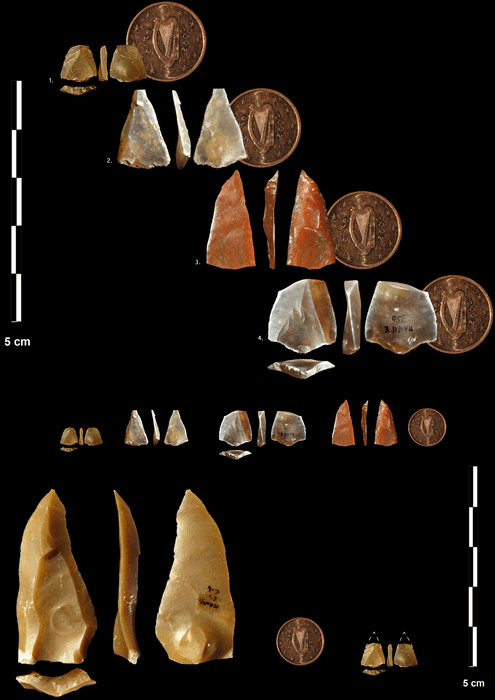The earliest known evidence for mechanically propelled weapons in Europe (most likely a bow and arrow) has been found in southern France, dating back 54,000 years. This breaks the earlier record by 9,000 years. In combination with a previous discovery at the same location it indicates this important technology coincided with the arrival of the first modern humans in Western Europe, but took a strangely long time to stick.
Last year the discovery of a child’s tooth in the Grotte Mandrin cave, Southern France, indicated early modern humans reached western Europe around 10,000 years earlier than had been thought. The discovery threw into question whether some technological products from the era were the work of Neanderthals, as previously thought, or our more direct ancestors.
Now an even more significant find from the same cave indicates those first human arrivals in the area may have had a notable technological advantage in dealing with the ice-age conditions. Further digging in Layer E, in which the tooth was found, has produced hundreds of artifacts. In a new study, a team led by Dr Laure Metz of Aix-Marseille Université reveals many of these appear to have been projectile weapons more suited to bows and arrows than spears.
Grotte Mandrin Layer E stratum was deposited around 54,000 years ago. The tooth from an early modern human child found there was not a precursor of an immediate takeover. Instead, it was sandwiched between layers, indicating previous and subsequent Neanderthal occupation of the cave.
Metz and co-authors report Layer E has also provided paleontologists with 2,267 stone tools and other remnants, three quarters of which are blades or other sharp points. It seems our ancestors knew a good thing when they found it.
The paper reports the points fell into two distinct categories, one 30-60 millimeters (1.2-2.4 inches) in length, the other 10-30 millimeters (0.4-1.2 inches). The two were made using different processes, with the small ones, known as nanopoints, produced through what the authors call; “’core-on-flake’ knapping of blanks produced while making the larger points.”

Top: 1 to 4: Nanopoints from Grotte Mandrin Layer E used as arrowheads. Bottom: Comparison between a point and a nanopoint. 1 euro cent for scale. Image credit: Laure Metz and Ludovic Slimak
Many of the points show no trace of use, and others are ambiguous. However, in almost half the cases that can be determined the wear on the blades indicates “percussive actions’, i.e. as weapons, either thrust or propelled. Other blades were used to cut meat or skins, which we know had been common to humanity and its ancestors for a long time.
The authors conclude the larger blades may have been used as spearpoints, but the nanopoints were attached to arrows, or possibly darts.
Although made of flint, among known weapons the nanopoints most closely resemble poisoned arrowheads from southern Africa. The team were also able to replicate the nanopoints out of flint and successfully shot the imitations from bows.

Dr Laure Metz making experimental bow and arrow shots with arrows armed with Neronian light points. Image credit: Ludovic Slimak

Dr Laure Metz demonstrating the practicality of arrows made with replicas of the flints found at Grotte Mandrin. Peer review has seldom been so high stakes. Image credit: Ludovic Slimak
Although there is evidence for the use of bows and arrows in Africa dating back as much as 70,000 years, the pattern of finds is considered somewhat confusing. Grotte Mandrin offers a clearer case of abundant use.
Nevertheless, the find raises questions of its own. Why, if early modern humans arrived in the area 54,000 years ago carrying this advanced hunting tool, did they then disappear, with Neanderthals re-establishing local dominance for 10 to 12 millennia?
We would expect a major technological advance either to be copied by the locals, of which there is no sign, or lead to rule by the intruders. Moreover, if the ability to kill game at a distance was insufficient to allow modern humans to take over the region at the time, what changed when they returned thousands of years later? If Grotte Mandrin holds the answers, it has yet to reveal them.
The paper is published open access in Science Advances.
Source Link: Earliest Evidence Of European Bows And Arrows Coincides With Excursion Into Neanderthal Territory